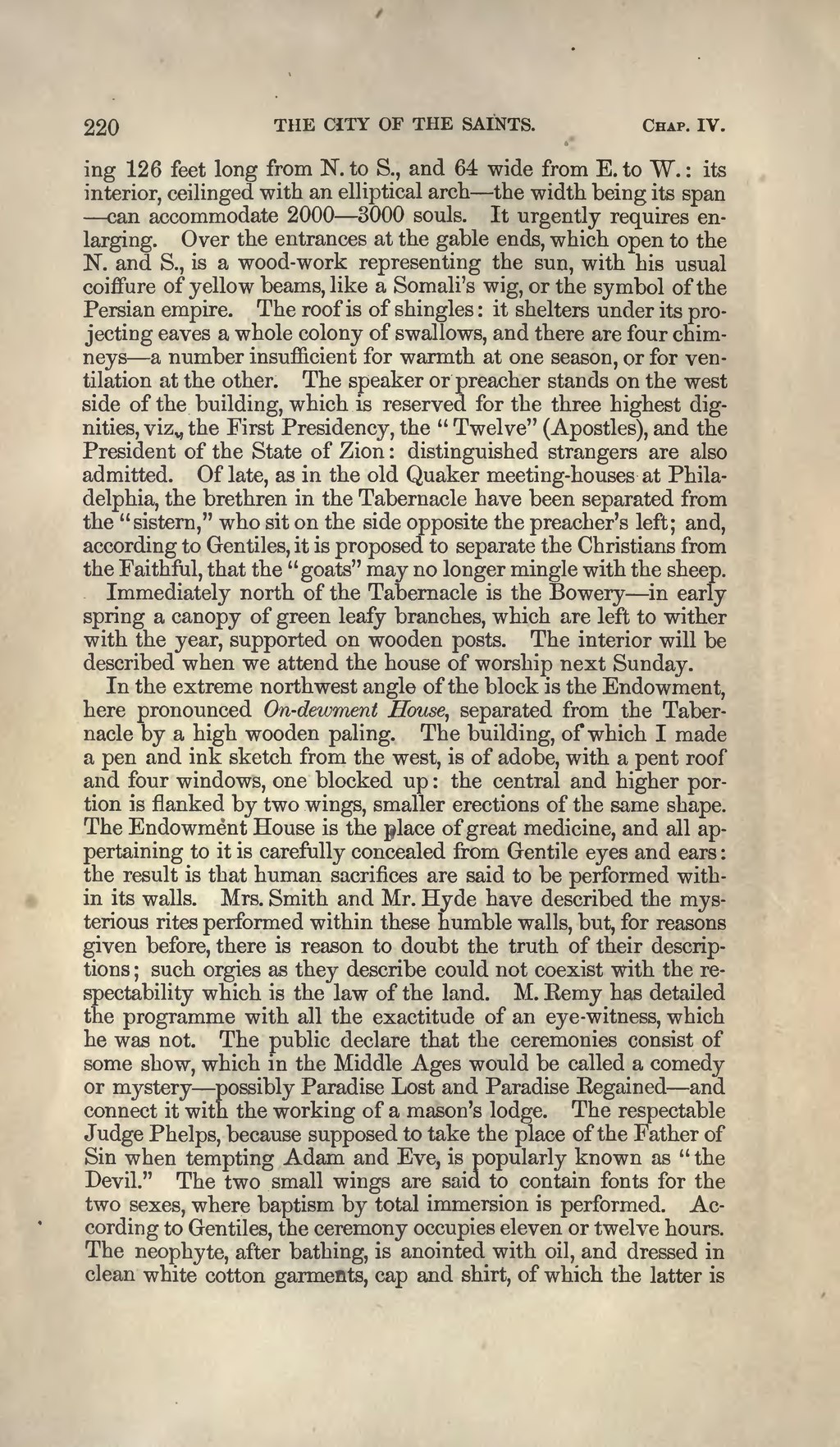ing 126 feet long from N. to S., and 64 wide from E. to W.: its interior, ceilinged with an elliptical arch—the width being its span—can accommodate 2000—3000 souls. It urgently requires enlarging. Over the entrances at the gable ends, which open to the N. and S., is a wood-work representing the sun, with his usual coiffure of yellow beams, like a Somali's wig, or the symbol of the Persian empire. The roof is of shingles: it shelters under its projecting eaves a whole colony of swallows, and there are four chimneys—a number insufficient for warmth at one season, or for ventilation at the other. The speaker or preacher stands on the west side of the building, which is reserved for the three highest dignities, viz, the First Presidency, the "Twelve" (Apostles), and the President of the State of Zion: distinguished strangers are also admitted. Of late, as in the old Quaker meeting-houses at Philadelphia, the brethren in the Tabernacle have been separated from the "sistern," who sit on the side opposite the preacher's left; and, according to Gentiles, it is proposed to separate the Christians from the Faithful, that the "goats" may no longer mingle with the sheep.
Immediately north of the Tabernacle is the Bowery—in early spring a canopy of green leafy branches, which are left to wither with the year, supported on wooden posts. The interior will be described when we attend the house of worship next Sunday.
In the extreme northwest angle of the block is the Endowment, here pronounced On-dewment House, separated from the Tabernacle by a high wooden paling. The building, of which I made a pen and ink sketch from the west, is of adobe, with a pent roof and four windows, one blocked up: the central and higher portion is flanked by two wings, smaller erections of the same shape. The Endowment House is the place of great medicine, and all appertaining to it is carefully concealed from Gentile eyes and ears: the result is that human sacrifices are said to be performed within its walls. Mrs. Smith and Mr. Hyde have described the mysterious rites performed within these humble walls, but, for reasons given before, there is reason to doubt the truth of their descriptions; such orgies as they describe could not coexist with the respectability which is the law of the land. M. Remy has detailed the programme with all the exactitude of an eye-witness, which he was not. The public declare that the ceremonies consist of some show, which in the Middle Ages would be called a comedy or mystery—possibly Paradise Lost and Paradise Regained—and connect it with the working of a mason's lodge. The respectable Judge Phelps, because supposed to take the place of the Father of Sin when tempting Adam and Eve, is popularly known as "the Devil." The two small wings are said to contain fonts for the two sexes, where baptism by total immersion is performed. According to Gentiles, the ceremony occupies eleven or twelve hours. The neophyte, after bathing, is anointed with oil, and dressed in clean white cotton garments, cap and shirt, of which the latter is
